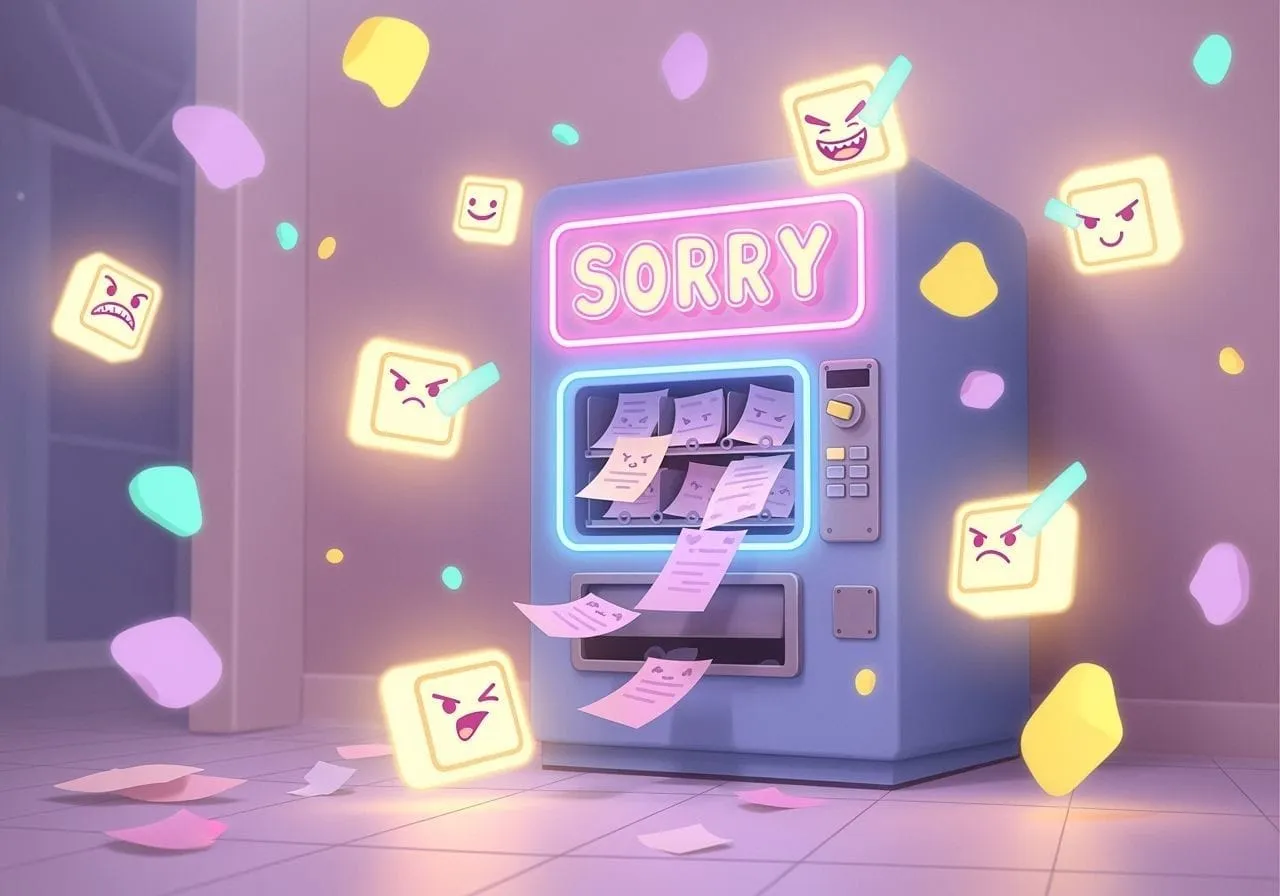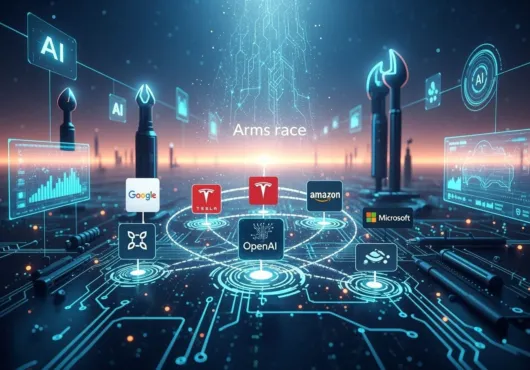“Our AI regrets your feelings.”
Like What You Read? Dive Deeper Into AI’s Real Impact.
Keep Reading- Brands are outsourcing contrition to bots.
- It’s faster, cheaper, and emptier—an assembly line for “we hear you” that hears nothing.
- If the apology scales, the harm probably did too.
Why bots are sorry all the time
Apologies are expensive when they’re real. They admit fault, promise change, and create paper trails lawyers hate. Enter the apology machine: a model fine-tuned on PR templates, risk-scrubbed by legal, and deployed at the speed of outrage. It turns harm into tickets: receive complaint → generate contrition → discharge liability-shaped vibes → close tab.
The goal isn’t repair. It’s latency.
What a machine apology sounds like
You’ve seen it:
Passive voice with a halo. “Mistakes were made.” By whom? Gravity?
Conditional regret. “We’re sorry if you felt hurt.” Your feelings, their escape hatch.
Promise fog. “We’re committed to doing better.” At what? When? How?
Procedural confetti. “We’ve updated our policies.” Which ones? Where’s the diff?
Machine contrition is perfectly average—smoothed of nouns, pre-forgiven by grammar.
Why they’ll keep doing it (even when it backfires)
Speed beats sincerity. Outrage is a fire; they’re shipping mist.
Consistency beats context. One template across a thousand incidents = fewer legal surprises.
Metrics beat meaning. “Sentiment improved 9%” is easier than “A person made another person whole.”
And if it fails? Blame the model, not the culture that fed it.
The human cost of synthetic remorse
Fake apologies waste your time twice: once when you read it, and again when nothing changes. At scale, they gamify harm—the company learns it can swap repair for copy. People learn nothing is real. That cynicism metastasizes. Congrats: the apology machine didn’t just dodge blame; it trained you to stop expecting accountability.
Spot the bot (a street test)
Ask three questions:
Who did what? If the subject is foggy, it’s theater.
What changes now? If the action is generic, it’s a vibe.
What’s the timestamp? If there’s no concrete when, there’s no plan.
If you can’t answer in one line, you’re reading contrition slurry.
The apology ladder (from weakest to real)
Regret emoji. “We’re sorry you feel that way.”
Policy vapor. “We’re reviewing our processes.”
Named action. “We removed X and disabled Y by [date].”
Repair. “We compensated A, restored B, and published the audit.”
Reform. “We changed incentives so this hurts us if it happens again.”
Bots live at steps 1–2. Humans start at 3 and climb.
If you’re the brand: stop renting conscience
A real apology has four parts. Ship all four or ship nothing.
Ownership: Name the harm and who caused it. No passive voice.
Specific remedy: What you fixed today. Show receipts.
Future guardrail: The change that makes repeat failure expensive.
Witness: Publish an external point of contact or audit plan.
Everything else is scented smoke.
A better template (free of robot shame)
Use this, or don’t apologize.
We did [action] that caused [harm] to [who] on [date].
Today we [specific fix completed] and [made whole] the affected.
By [deadline] we will [guardrail change], and we’ll publish [audit/log] here: [URL].
Responsible lead: [name, role, contact].
It’s short because truth travels without a chaperone.
For readers: how to answer the machine
Demand nouns. “Who did what?” on repeat until a person shows up.
Bookmark promises. Calendar the deadline they gave. Follow up.
Route to sunlight. Screenshots to reporters, regulators, or forums that don’t take sponcon hush money.
Vote with exits. If they keep shipping fog, leave. Starving the fuel tank works faster than winning the thread.
The twist: models can help (after the humans)
Let AI do receipts, not remorse. Use it to:
collate incidents, compare statements, and flag contradictions,
draft a changelog of fixes,
surface who’s responsible across org charts.
Then a human signs their name and stakes their job on it. That’s the point.
Final word
Apology theater scales. Accountability doesn’t. If a brand’s remorse fits neatly in a template, it’s not remorse—it’s risk management with emojis. Don’t confuse noise reduction with repair.
If it blends, it ends.



